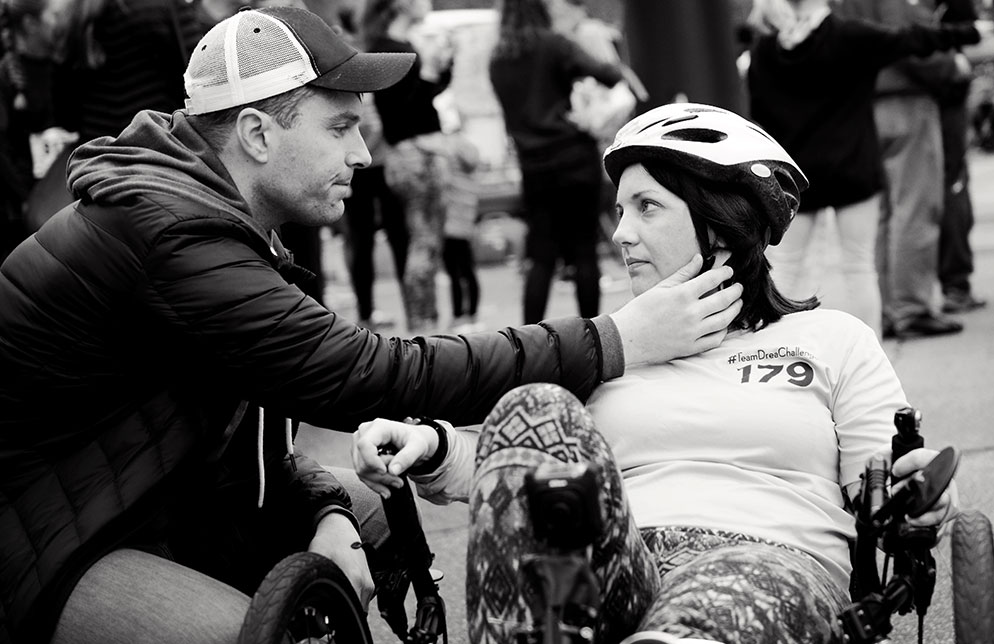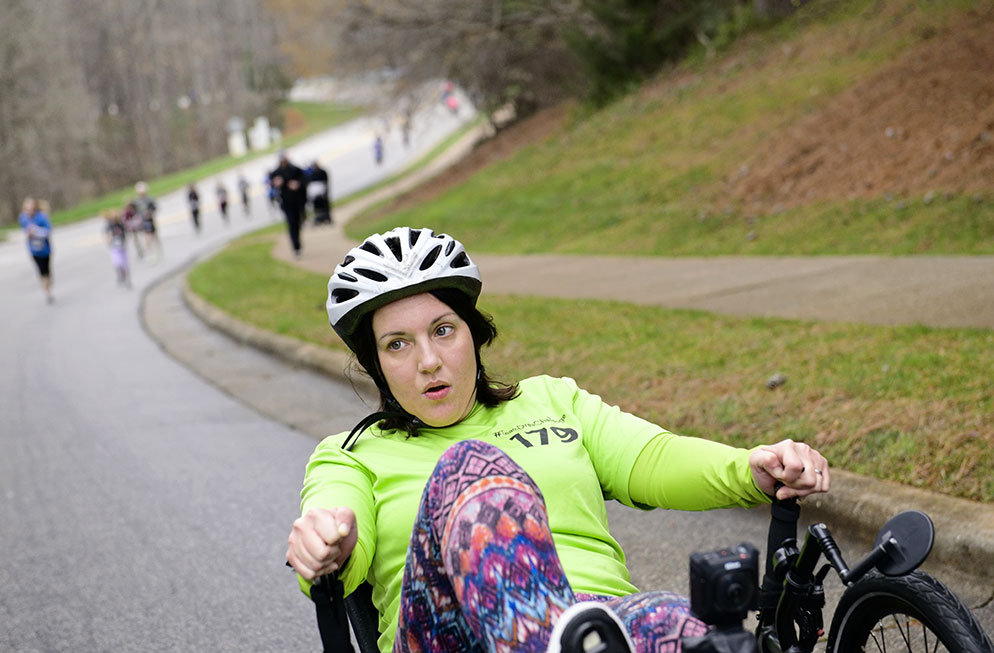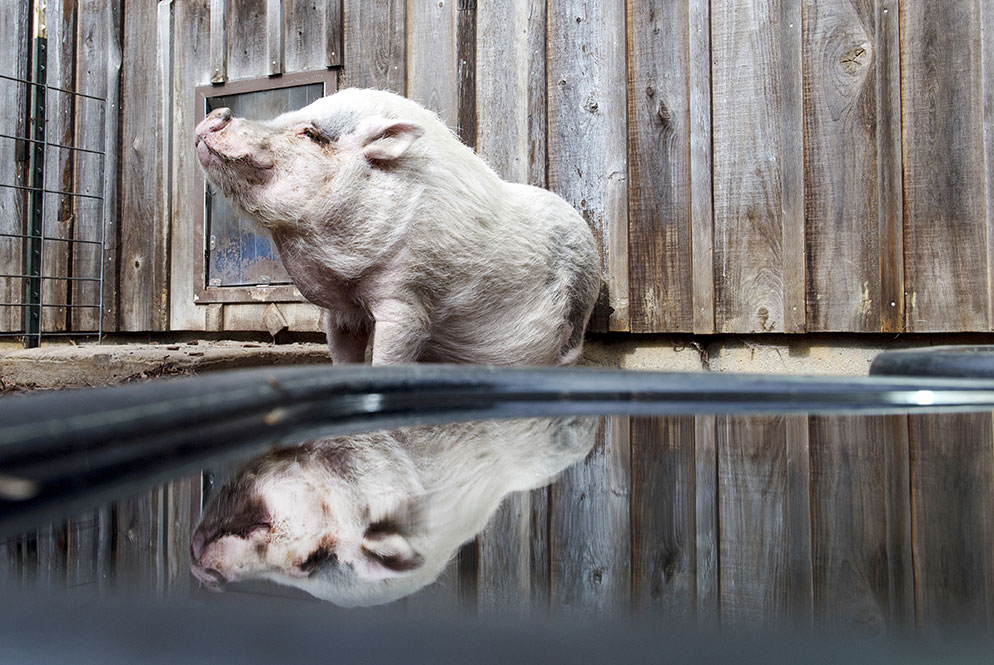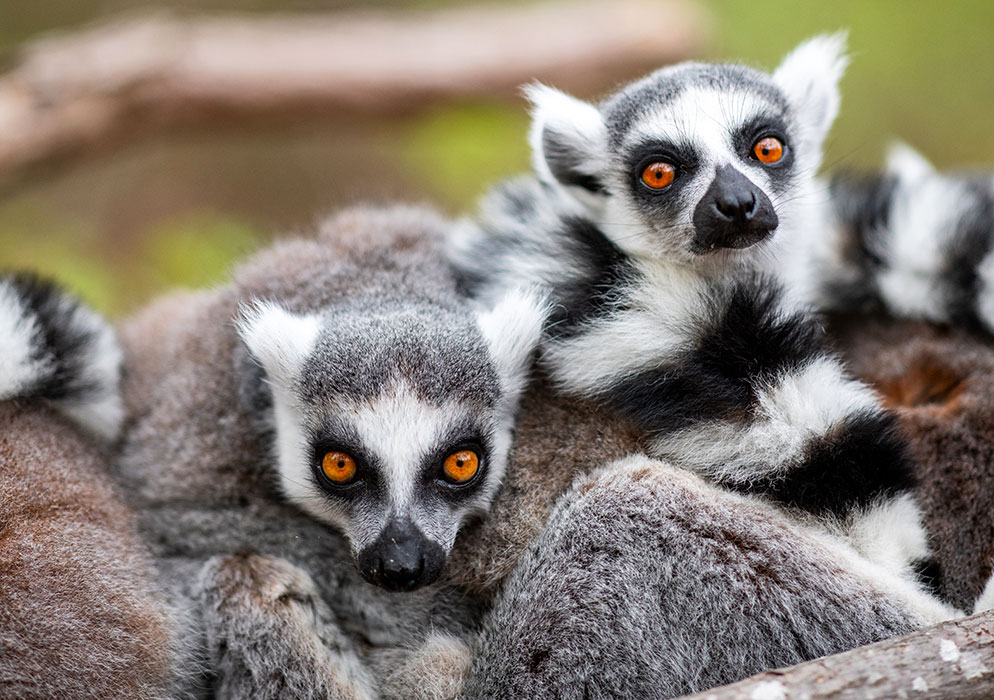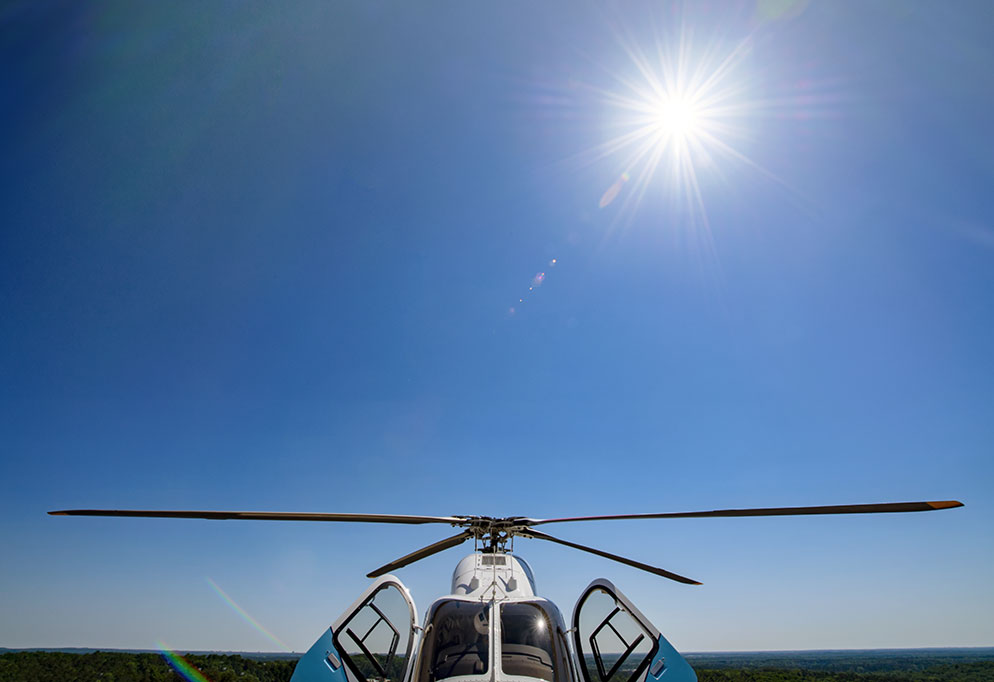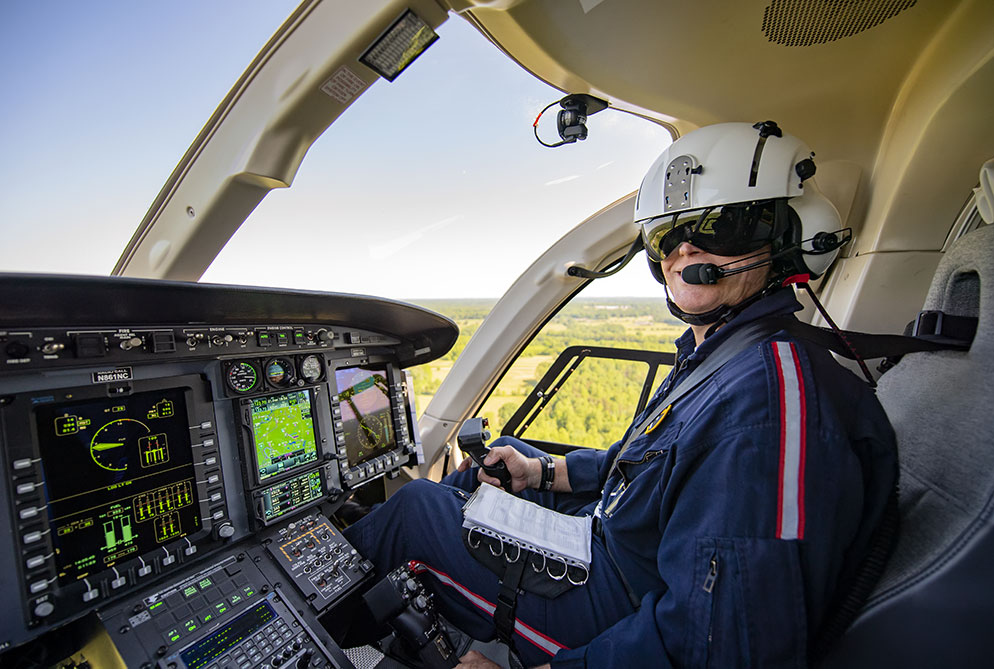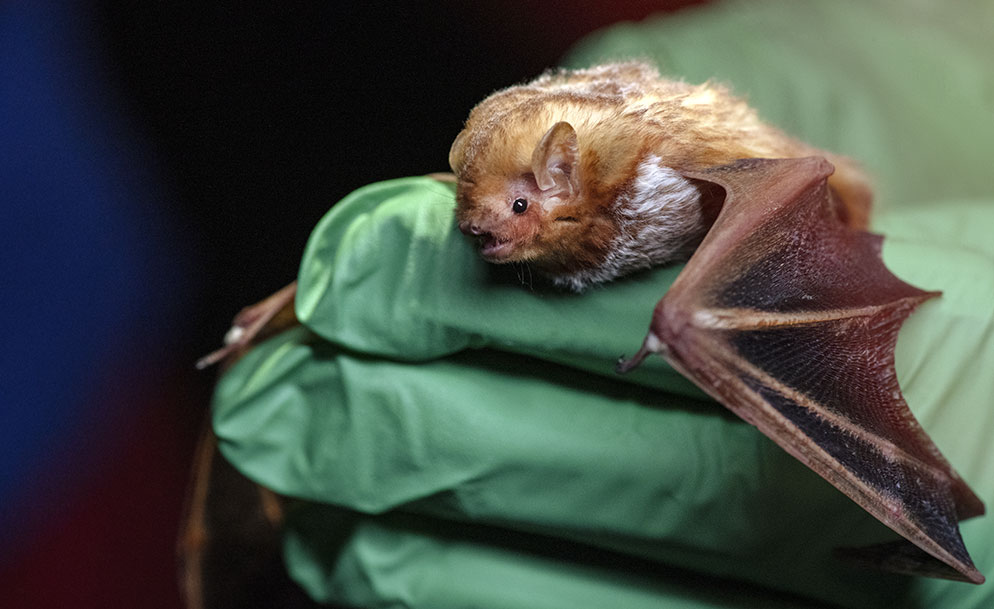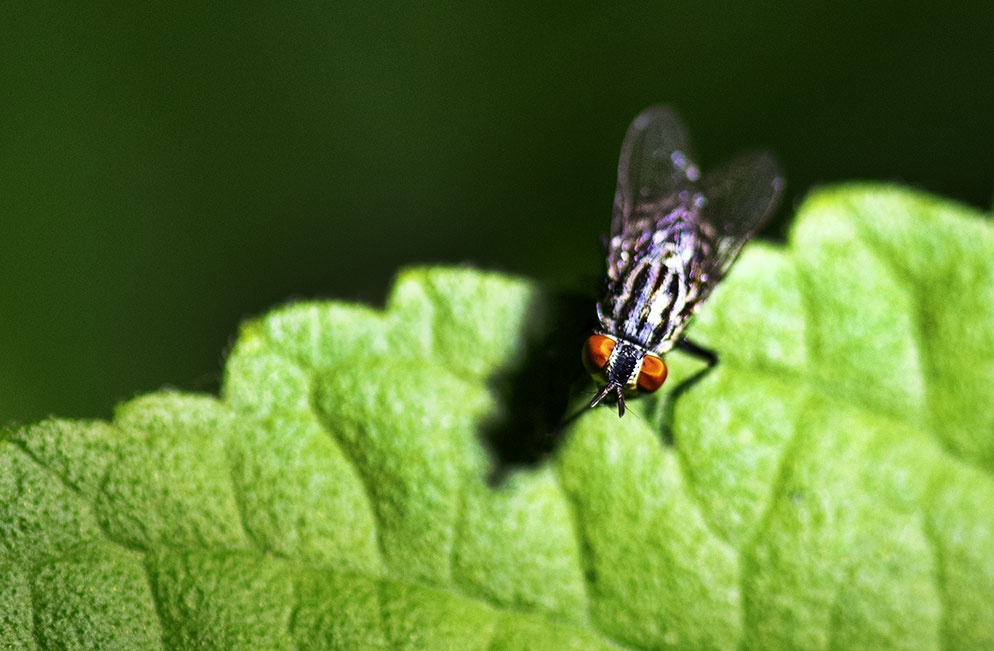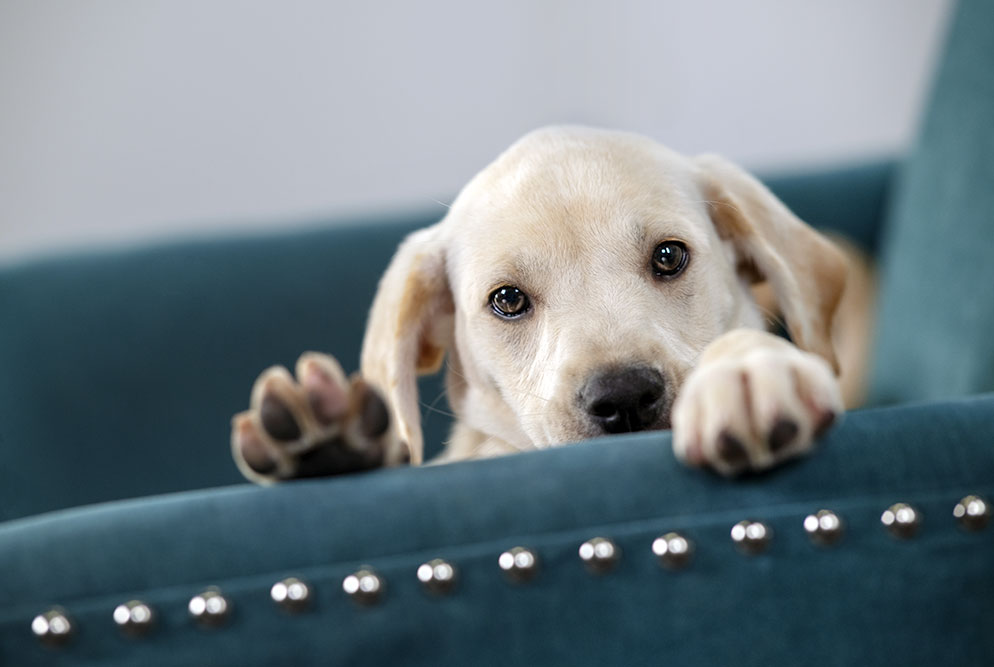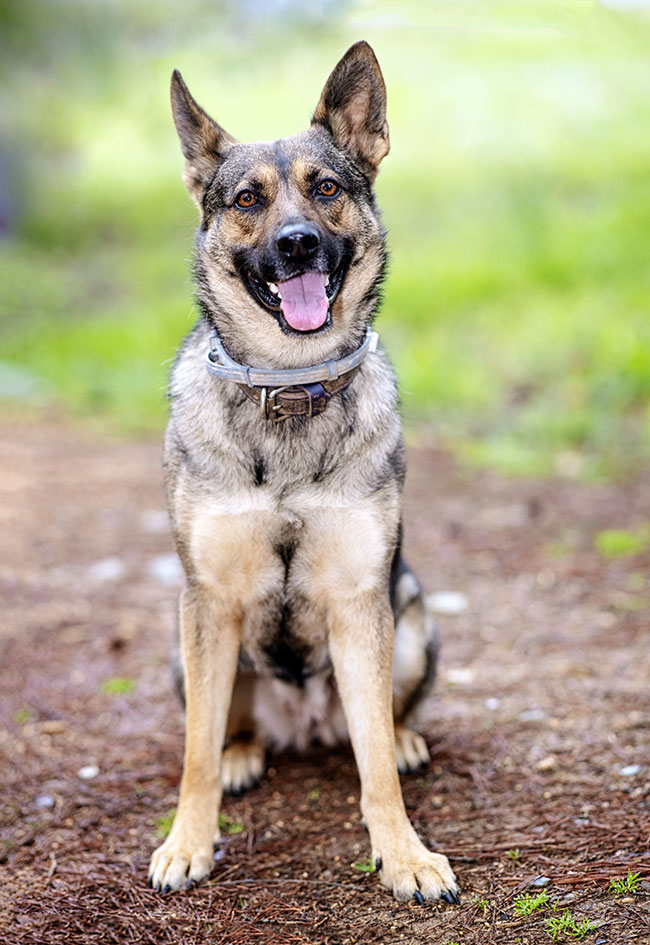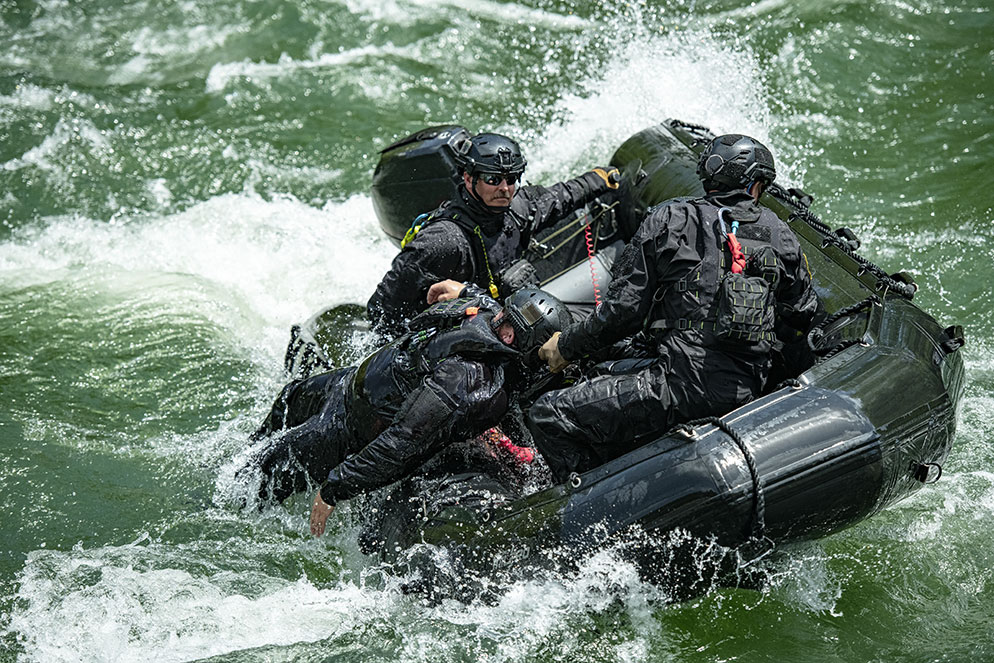Chasing Frames Showcases Photography's Power to Inspire
You get it right away.
Watch any episode of Nikon Ambassador Tamara Lackey's PBS series, Chasing Frames, and there it is: the feeling that you and Tamara are chasing down this story together.
And it will be a story well worth sharing. "We established a basic premise," Tamara says, "that the episodes would be about people who are protecting the planet, people who are rescuing those in need and people who are transforming lives."
For the Racing Against ALS episode, Tamara ran alongside as Andrea, diagnosed with the disease, competed in a 5K race. "She wants to race as long as she's able to do it," Tamara says. D850, AF-S NIKKOR 24-70mm f/2.8G ED, 1/1000 second, f/5, ISO 1600, manual exposure, Matrix metering.
Andrea and her husband, Dave, at the finish line. "I took the color out later because I didn’t want it to distract. I wanted the photo to be about the look between them." D850, AF-S NIKKOR 24-70mm f/2.8G ED, 1/1000 second, f/3.2, ISO 1250, manual metering, Matrix metering.
The subtext of the series is its focus on using photography as a powerful tool to explore, inform and inspire. "This is not a project where we wait for things to happen. We go along with people who are making good things happen, and the idea included learning from the people we met."
In fact, on-the-job learning was a deliberate decision. "I don't want to over-learn anything until I get there," Tamara says. "I want to have a general idea of what's going on so I can learn as I go and ask the same questions that the typical person might ask. That way I can have a genuine response while we're filming, and that's worked quite well."
"One of the pigs in the Pigs as Pets episode got near the trough, and it was like, Okay, I got a reflection! But I'm still thinking, Got to see the photo....and when I did, it was, Yep, there it is!" D5, AF-S NIKKOR 24-70mm f/2.8G ED, 1/400 second, f/10, ISO 320, manual exposure, center-weighted metering.
The wild horses of Corolla, on the Outer Banks of North Carolina, are descendants of survivors of shipwrecks that took place over 500 years ago. "They're highly protected, so for this episode I went with a long lens and tracked them from a distance. They wander around freely—not just on the beach, but around people's homes and on the streets." D850, AF-S NIKKOR 70-200mm f/2.8G ED VR II, 1/1000 second, f/2.8, ISO 320, manual exposure, Matrix metering.
On the Move
Chasing Frames is a particularly apt title. Things tend to move quickly: the narrative, the activity, Tamara's reactions, the pace of the edit.
"Once we got the idea down, we went out and found subjects that met a couple of considerations," Tamara says. "One, it had to be a compelling subject and storyline. Two, we had to be able to get striking, storytelling visuals, both video and stills. And three, we had to learn something along the way—about the subjects, and about how to tell the stories."
"North Carolina has the second largest population of lemurs in the world, after Madagascar, and for The Land of Lemurs show I got to go to the Duke University Lemur Center and get really close to them. They're endangered in the world, and at the Center's giant reserve they're studied and given safe areas to reproduce." D850, AF-S NIKKOR 105mm f/1.4E ED, 1/2000 second, f/1.4, ISO 400, manual exposure, Matrix metering.
Broadcast by UNC TV in North Carolina, and reaching five states, the dozen episodes of the first season included stories on swift water rescue, K9 search and rescue, exploring light and animal rescue and care.
"The whole thing started because, generally speaking, I've been photographing a lot of these types of lifestyle subjects for years," Tamara says. "One of the videographers on my shoots was also freelancing for PBS, and he said he thought they might be interested in doing a show."
Before long Tamara was in talks with the station. "We put together the idea of these six-minute, 44-second programs." Along the way, Nikon signed on as a co-sponsor, and the idea turned to reality.
"I learned during the Urgent Air Care episode that these UNC Carolina Air Care helicopters can land almost anywhere—even in the tiniest patches of the corner of a highway that's blocked up. In every one of these episodes, there are multiple moments where I get to step outside of myself and just be in awe of other people and the things they're doing." D5, AF-S NIKKOR 14-24mm f/2.8G ED, 1/800 second, f/16, ISO 320, manual exposure, Matrix metering.
"I'm leaning back as far as I can inside the Air Care helicopter—I've got the camera practically behind me to get as wide a shot as possible." D5, AF-S NIKKOR 14-24mm f/2.8G ED, 1/1250 second, f/3.2, ISO 800, manual exposure, Matrix metering.
"For each of these episodes I'm finding something fascinating, figuring out the best way to showcase it and always learning more as I go along," Tamara says. "We did an episode with Carolina Air Care—an urgent life-flight group—and I knew, of course, that helicopters will fly people to hospitals, but I had no idea that they're an absolute lifeline for a lot of people in rural communities who have no other way to get to a hospital. The flight medics work on 24-hour shifts and go out on any call. They're flying ten-million-dollar helicopters, fully fitted to be ERs. So for me, for every one of the episodes, there are these moments of learning, and of appreciation of the skill and commitment it takes to do this work."
For the episode titled Bat Blitz, Tamara joined researchers, scientists and bat surveyors as they caught and tagged bats to track them. "The idea is to make sure the bat population is as positive and stable as possible," Tamara says, "because they do so much for our environment." D850, AF Micro-Nikkor 105mm f/2.8D, 1/160 second, f/7.1, ISO 1250, manual exposure, Matrix metering.
"This is a shot I made while waiting for night to drop for the firefly episode [Night Luminescence: Blue Ghost Fireflies], and it's not a firefly, it's just a fly. The fireflies come out for a short time every year in an area near Pisgah National Forest in North Carolina, and they light up the valleys for about an hour a night—crazy green lights everywhere." D850, AF Micro-Nikkor 105mm f/2.8D, 1/320 second, f/5, ISO 500, manual exposure, Matrix metering.
This is not a project where we wait for things to happen. We go along with people who are making good things happen.
The Rescue Puppies episode was about how foster care organizations work for dogs and cats. "I learned that foster organizations in North Carolina are alerted when shelters can no longer hold an animal, and they will take it for fostering for a time, trying to find a home. That buys more time for outreach efforts. We hosted an adoption event while doing this episode, and two dozen dogs were adopted." D850, AF-S NIKKOR 105mm f/1.4E ED, 1/1000 second, f/3.2, ISO 500, manual exposure, Matrix metering.
The Storytelling Tools
When you're chasing frames, you've got to be ready for anything, and Tamara brings a full kit of Nikon gear to every story.
"You've got to have the freedom to follow the documentary style that PBS wants," she says of the always-be-prepared attitude it takes to make this kind of storytelling work. The cameras for stills and video included the Z 6, Z 7, D5 and D850. "The Z 6 and Z 7 were the main video cameras," she says, "and we also got to use 180- and 360-degree KeyMission cameras on helmets, on the dogs for the search-and-rescue episode, on a bike, in the back of a helicopter and sometimes just on a stick to cover where we were to see if we could pull a couple of seconds. Those cameras allowed us to pepper in some really cool looks. For the helicopter rescue episode I think we had seven cameras on one interior segment. It was like, Let's just throw this all on and see what we get."
And you get that, too: this is real. You can't rehearse it, script it, practice it or fake it. Most of it is one take and done.
Looking back on the show's first season—it's been renewed for a second—Tamara says, "it was such a heartening experience, spending time with people doing so many good things."
You're invited to share that experience.
K9 Search and Rescue revealed that "one sniff of a scarf and these dogs can follow the scent in the air for miles. To go alongside a dog while it tracks over a distance is amazing. I knew dogs had great senses of smell, but not that great." D850, AF-S NIKKOR 105mm f/1.4E ED, 1/500 second, f/2.2, ISO 800, manual exposure, spot metering.
"The Swift Water Rescue episode was awesome," Tamara says. "I had no idea what went into this until I heard some of their stories and photographed their skills test. In this shot they're practicing their turns and rescue maneuvers in realistic situations, saving the 'designated victim,' and doing it super-fast, over and over." D850, AF-S NIKKOR 70-200mm f/2.8G ED VR II, 1/1000 second, f/3.5, ISO 800, manual exposure, Matrix metering.
Chasing Frames with Tamara Lackey - Tamara Lackey goes behind the scenes in her PBS series Chasing Frames, photographing inspiring people who make a difference in the world.

